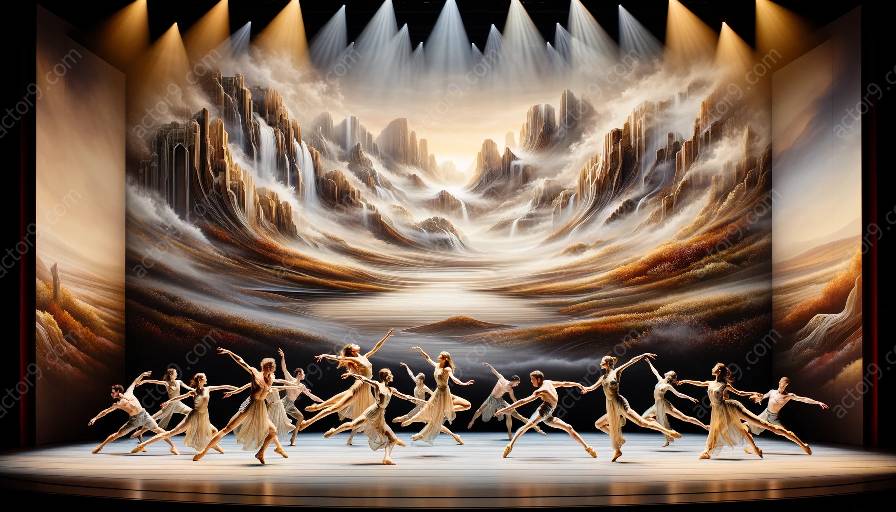Physical theatre choreography is a dynamic art form that combines movement, expression, and storytelling with the use of the body as a primary instrument of communication. In the realm of physical theatre, the integration of music and sound opens up a realm of possibilities for enhancing the emotional impact, rhythm, and narrative depth of a performance. This harmonious blend of art forms results in a compelling and immersive experience for both performers and audiences.
Essence of Physical Theatre
Physical theatre, by its nature, focuses on the expressiveness of the human body and its interactions with space, objects, and other performers. It transcends language barriers and reaches the audience on a primal level, evoking powerful emotions and eliciting visceral responses. The art form prioritizes the use of movement, gesture, and body language to convey meaning, often delving into surreal or abstract themes.
Role of Music and Sound in Enhancing Choreography
Music and sound play a pivotal role in shaping the emotional landscape of physical theatre choreography. They act as evocative catalysts, guiding the narrative flow and intensifying the impact of movements and gestures. Whether it's the stirring melodies of a symphony or the subtle resonance of ambient sounds, the auditory elements become an integral part of the performance, enveloping the audience in a multisensory experience.
Creating Atmosphere and Mood
The selection of music and soundscapes influences the atmosphere and mood of the performance, setting the stage for the unfolding narrative. From haunting melodies to pulsating rhythms, the sonic backdrop can transport audiences to otherworldly realms or evoke a deep sense of nostalgia and introspection. These auditory stimuli infuse the choreography with an additional layer of depth and meaning, bridging the gap between the conscious and subconscious realms.
Rhythmic Synchronization
Music and sound provide a rhythmic framework that resonates with the physical movements of the performers. The synchronization of choreography with musical beats or rhythmic elements creates a mesmerizing dance of sound and motion. This synergy elevates the visual impact of the performance, amplifying the connection between the performers and the audience through a shared pulse that transcends linguistic barriers.
Narrative Enhancement
Soundscapes and musical motifs can function as a sonic narrative, enriching the storytelling aspect of physical theatre choreography. They can underscore pivotal moments, emphasize character emotions, or symbolize abstract concepts through auditory symbolism. By weaving a sonic tapestry that supplements the visual narrative, music and sound deepen the audience's engagement and comprehension of the performance.
Collaborative Fusion of Arts
The integration of music and sound in physical theatre choreography embodies a collaborative fusion of arts, where the elements harmonize to create a wholly immersive experience. Composers, sound designers, choreographers, and performers collaborate to craft a cohesive sensory journey that blurs the boundaries between sound, movement, and expression. This interdisciplinary approach allows for innovative experimentation and the exploration of new artistic horizons.
Immersive Audience Experience
When music and sound seamlessly integrate with physical theatre choreography, the result is an immersive audience experience that transcends passive observation. The combined impact of visual, auditory, and kinesthetic elements captivates the senses and ignites the imagination. Spectators become active participants in the unfolding narrative, transcending mere observation and becoming co-creators of the performance's emotional landscape.
Conclusion
The integration of music and sound in physical theatre choreography enriches the essence of the art form, amplifying its emotional resonance and narrative depth. By embracing the collaborative fusion of movement and auditory elements, physical theatre creators craft compelling experiences that transcend conventional storytelling. Together, music and sound elevate the art of physical theatre choreography, inviting audiences into a multifaceted realm where the boundaries between art forms blur, and the human experience takes center stage.




































